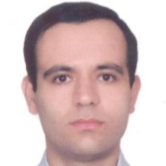International Journal of Modern Education and Computer Science (IJMECS)
IJMECS Vol. 6, No. 7, 8 Jul. 2014
Cover page and Table of Contents: PDF (size: 1169KB)
Scheduling of Generating unit commitment by Quantum-Inspired Evolutionary Algorithm
Full Text (PDF, 1169KB), PP.55-61
Views: 0 Downloads: 0
Author(s)
Index Terms
Evolutionary Algorithm, Quantum computing, Unit commitment.
Abstract
An Quantum-Inspired Evolutionary Algorithm (QEA) is presented for solving the unit commitment problem. The proposed method has been used to achieve the schedule of system units by considering optimal economic dispatch. The QEA method based on the quantum concepts such as Q-bit, present a better population diversity compared with previous evolutionary approaches, and uses quantum gates to achieve better solutions. The proposed method has been tested on a system with 10 generating units, and the results shows the effectiveness of algorithm compared with Other previous references. Furthermore, it can be used to solve the large-scale generating unit commitment problem.
Cite This Paper
Ebrahim Zare juybari, Seyed Mehdi Hosseini, "Scheduling of Generating unit commitment by Quantum-Inspired Evolutionary Algorithm", International Journal of Modern Education and Computer Science (IJMECS), vol.6, no.7, pp.55-61, 2014. DOI:10.5815/ijmecs.2014.07.08
Reference
[1]R. M. Burns and C. A. Gibson, “Optimization of priority lists for a unit commitment program,” in Proc. IEEE/Power Engineering SocietySummer Meeting, Paper A, 1975, vol. 75, pp. 453–1.
[2]W. L. Snyder Jr., H. D. Powell Jr., and J. C. Rayburn, “Dynamic programming approach to unit commitment,” IEEE Trans. Power App. Syst., vol. PAS-2, pp. 339–350, May 1987.
[3]H. H. Balci and J. F. Valenzuela, “Scheduling electric power generators using particle swarm optimization combined with the Lagrangian relaxation method,” Int. J. Appl. Math. Comput.Sci., vol. 14, no. 3, pp. 411–421, 2004.
[4]J. A. Muckstadt and R. C. Wilson, “An application of mixed-integer programming duality to scheduling thermal generating systems,” IEEE Trans. Power App. Syst., vol. PAS-87, pp. 1968–1978, 1968.
[5]A. I. Cohen and M. Yoshimura, “A branch-and-bound algorithm for unit commitment,” IEEE Trans. Power App. Syst., vol. PAS-102, no. 2,pp. 444–451, 1983.
[6]K. P.Wong and K. Doan, “An artificial intelligence algorithm for daily scheduling of thermal generators,” Proc. Inst. Elect. Eng. Part C, vol.138, no. 6, pp. 518–534, 1991.
[7]P. C. Yang, H. T. Yang, and C.-L. Huang, “Solving the unit commitment problem with a genetic algorithm through a constraint satisfactiontechnique,” Elect. Power Syst. Res., vol. 37, pp. 55–65, 1996.
[8]A. Viana, J. P. Sousa, and M. Matos, “Simulated annealing for the unitcommitment problem,” presented at the The IEEE Porto Power Tech.Conf., Porto, Portugal, Sep. 10–13, 2001, unpublished.
[9]K. A. Juste, H. Kita, E. Tanaka, and J. Hasegawa, “An evolutionary programming solution to the unit commitment problem,” IEEE Trans.Power Syst., vol. 14, no. 4, pp. 1452–1459, Nov. 1999.
[10]T. O. Ting, M. V. C. Rao, and C. K. Loo, “A novel approach for unit commitment problem via an effective hybrid particle swarm optimization,”IEEE Trans. Power Syst., vol. 21, no. 1, pp. 411–418, Feb. 2006.
[11]G. K. Purushothama and L. Jenkins, “Simulated annealing with local search—A hybrid algorithm for unit commitment,” IEEE Trans. PowerSyst., vol. 18, no. 1, pp. 273–278, Feb. 2003.
[12]K. H. Han and J. H. Kim, “Quantum-inspired evolutionary algorithm for a class of combinatorial optimization,” IEEE Trans. Evol. Comput, vol. 6, pp. 580–593, Dec. 2002.
[13]K. H. Han and J. H. Kim, “On setting the parameters of quantum-inspired evolutionary algorithm for practical applications,” in Proc. 2003 Congr. Evolutionary Computation, Canberra, Australia, Dec. 2003, pp.178–18.
[14]T. W. Lau, C. Y. Chung, K. P. Wong, T. S. Chung, and S. L. Ho,“Quantum-inspired evolutionary algorithm approach for unit commitment,”IEEE Trans. Power Syst., vol. 24, no. 3, pp. 1503–1512, Aug.2009.
[15]T. W. Lau, C. Y. Chung, K. P. Wong, T. S. Chung, and S. L. Ho,“ An Advanced Quantum-inspired evolutionary algorithm approach for unit commitment,”IEEE TRANSACTIONS ON POWER SYSTEMS, VOL. 26, NO. 2, MAY 2011.
[16]S. A. Kazarlis, A. G. Bakirtzis, and V. Petridis, “A genetic algorithmsolution to the unit commitment problem,” IEEE Trans. Power Syst.,vol. 11, no. 1, pp. 83–92, Feb. 1996.
